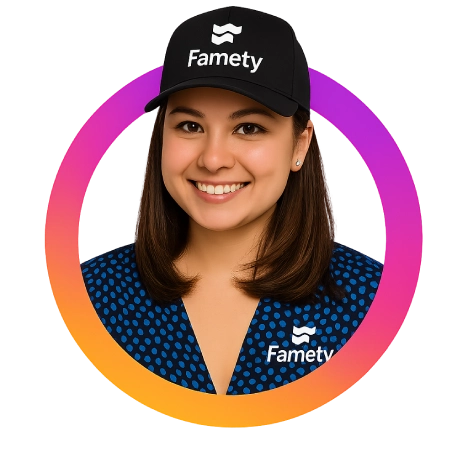- ATS stands for “Applicant Tracking System,” a software tool used by recruiters to manage and screen applications.
- On LinkedIn, ATS determines which resumes reach hiring managers based on keyword optimization and formatting.
- Using the right keywords, formatting your resume simply, and keeping your profile updated improves ATS visibility.
- Understanding ATS helps job seekers adapt their LinkedIn profiles for automated recruitment and higher visibility.
On LinkedIn job listings, the term ATS often appears in recruiter notes or resume guidelines. It’s an essential part of modern hiring, shaping how job applications are filtered, sorted, and viewed by employers. Understanding ATS helps professionals tailor their resumes and LinkedIn profiles so they actually reach human recruiters instead of being filtered out automatically.
ATS Meaning in One Line
ATS stands for Applicant Tracking System, a software used by companies to collect, organize, and evaluate job applications efficiently.
Defined as “Applicant Tracking System,” a digital tool employers use to manage and filter job applications
An Applicant Tracking System is a specialized recruiting tool that automates the process of receiving, reading, and sorting job applications. When candidates apply for a position through LinkedIn or a company’s career page, their resumes are first analyzed by this system before reaching a recruiter. The ATS scans each document for keywords, skills, and experience that match the job description.
Helps recruiters organize resumes, shortlist candidates, and streamline hiring workflows
Recruiters use ATS platforms to manage hundreds of applicants per position, reducing manual effort and human bias. By ranking candidates based on relevant criteria, the system saves time and increases hiring accuracy. Tools like Greenhouse, Workday, or Lever allow recruiters to filter resumes by experience level, education, and specific technical skills, ensuring only the most relevant profiles reach the interview stage.
How ATS determines who gets seen by recruiters based on keyword relevance and profile optimization
ATS systems operate on keyword matching logic. If your LinkedIn profile or resume lacks certain terms that the job description includes, you may be automatically filtered out. For example, if a job listing asks for “data analysis,” but your profile only mentions “data review,” you could be overlooked. To succeed, professionals must optimize their profiles with relevant, natural keywords that align with job postings to ensure visibility in recruiter searches.
Where You See ATS on LinkedIn Job Posts
The term ATS appears in many areas across LinkedIn, especially where hiring, job applications, and profile optimization intersect. Both job seekers and recruiters reference ATS to improve their efficiency. For candidates, it’s about making resumes readable by the system; for recruiters, it’s about managing large applicant volumes without missing qualified talent.
Job listings mentioning “ATS-friendly resumes” to indicate system compatibility
Many LinkedIn job posts include the phrase “ATS-friendly” to guide applicants on how to format their resumes. An ATS-friendly resume avoids tables, graphics, and complex layouts, ensuring that the system can read and categorize the information correctly. Recruiters often specify this in the job description to prevent formatting issues that cause resumes to be skipped during the initial scan.
Recruiter descriptions highlighting use of ATS tools like Workday, Greenhouse, or Lever
Companies frequently list their preferred ATS software in job posts, showing candidates the platforms used for application management. For example, a recruiter may note that they use Greenhouse for talent acquisition or Workday for enterprise-level hiring. Knowing which tool is in use helps applicants understand how their data will be processed and what to expect from the review timeline.
Resume-writing guides and LinkedIn tips teaching candidates to optimize profiles for ATS visibility
Across LinkedIn, creators and career coaches regularly share ATS optimization tips to help job seekers improve their chances of being seen. These guides emphasize keyword matching, section labeling, and consistent formatting. Posts or newsletters with this focus often attract engagement from professionals aiming to make their profiles align better with recruiter search criteria.
Hashtags such as #ATS, #ATSFriendly, and #JobSearch used by professionals to improve discoverability
Hashtags play a major role in making content more searchable on LinkedIn. Tags like #ATS, #ATSFriendly, and #JobSearch connect professionals with relevant discussions, resume advice, and hiring trends. Many job seekers include these hashtags under posts to increase the visibility of their experiences and attract recruiters who are actively looking for candidates familiar with ATS best practices.
How to Use ATS the Right Way
Understanding how to use ATS effectively can be the difference between getting noticed and being filtered out. Most resumes are never seen by human recruiters because they fail to meet basic system requirements. Optimizing both your LinkedIn profile and your resume ensures that your application passes the first digital screening and reaches decision-makers.
Use relevant keywords from job descriptions throughout your LinkedIn profile and resume
Every job post on LinkedIn contains valuable keywords that reflect what recruiters are seeking. Incorporate these exact terms naturally into your headline, experience, and skills sections. For example, if a job description emphasizes “project management” and “cross-functional collaboration,” make sure those phrases appear within your profile summary or previous role descriptions. Keyword alignment helps the ATS recognize your profile as a strong match.
Format your resume in clean, simple text that ATS can easily scan
An ATS reads resumes like data. Complex formatting, images, and columns can confuse the system and result in lost information. Use standard fonts such as Arial or Calibri, left-aligned text, and consistent headings for sections like Experience, Education, and Skills. This minimalist structure helps the software parse your qualifications accurately and prevents disqualification due to formatting errors.
Avoid images, graphics, or unusual fonts that confuse automated systems
Although a visually creative resume might look appealing to humans, it can be unreadable to automated tools. ATS programs struggle to interpret graphics, charts, and symbols. Instead of adding visual elements, rely on strong wording and clear organization. You can use bullet points to make your resume more skimmable while still maintaining ATS compatibility.
Regularly update your LinkedIn skills and experience to match hiring algorithms
Recruiters frequently search LinkedIn using ATS integrations or filters based on skills and titles. By regularly updating your profile to reflect your latest certifications, tools, and responsibilities, you improve your visibility in those filtered searches. Keeping your content current ensures your profile aligns with trending job requirements and helps the algorithm surface your name for the right opportunities.
Summary by Editor: ICP stands for “Ideal Customer Profile,” describing the audience most likely to benefit from your product or service. On LinkedIn,...
Summary by Editor: TL;DR stands for “Too Long; Didn’t Read,” a popular acronym simplifying lengthy LinkedIn posts into short, impactful summaries. It...
Top Ways to Optimize Your Profile for ATS Success:
- Use keywords from multiple relevant job descriptions to strengthen matches.
- Add measurable results (percentages, achievements) to make your profile data-rich.
- Maintain consistent language between your resume and LinkedIn profile.
- Regularly check trending skills in your field and integrate them naturally.
- Keep your job titles and industry terms standardized for easier ATS indexing.
ATS vs Related Acronyms
On LinkedIn, ATS connects to a wider ecosystem of professional terms that describe how people find jobs, build networks, and share information. While ATS focuses on filtering candidates through automation, other acronyms like ICP, LION, and TL;DR reflect audience targeting, open networking, and concise communication. Understanding how these work together helps professionals optimize both visibility and engagement across the platform.
Comparison Table: ATS vs ICP vs LION vs TL;DR
| Acronym | Meaning | Core Function | Common Use on LinkedIn |
| ATS | Applicant Tracking System | Filters and organizes job applications | Used in job posts and resume guidelines |
| ICP | Ideal Customer Profile | Defines the best-fit audience for sales and marketing | Used in B2B outreach and lead generation |
| LION | LinkedIn Open Networker | Encourages open networking with professionals | Found in profile headlines and connection notes |
| TL;DR | Too Long; Didn’t Read | Summarizes long content for clarity | Used in post intros or conclusions |
How ATS differs from ICP, focusing on recruitment filtering instead of audience targeting
While ATS helps recruiters identify qualified job candidates, ICP is used primarily in sales and marketing to define target customers. ATS focuses inward on managing incoming applications, while ICP looks outward, identifying who to reach. For job seekers, understanding both concepts bridges the gap between applying for roles and marketing themselves effectively to the right employers.
The relationship between ATS and LION networking for visibility in recruiter searches
A strong LION-style network can improve a candidate’s chances of being noticed by recruiters who use ATS tools. Open networkers often have broader reach and higher engagement rates, making them more discoverable. When a recruiter searches for profiles through an ATS-integrated system, users with wide professional visibility stand out, showing that networking and system optimization complement each other.
Why TL;DR enhances content readability while ATS filters job applications efficiently
TL;DR and ATS serve different purposes but share a similar goal: improving efficiency. TL;DR simplifies complex information for readers, while ATS streamlines how recruiters handle large applicant volumes. Both operate as filters, one for information and the other for people, ensuring that only the most relevant content or candidates move forward. When used effectively, these concepts reflect the balance between clarity, relevance, and reach on LinkedIn.







